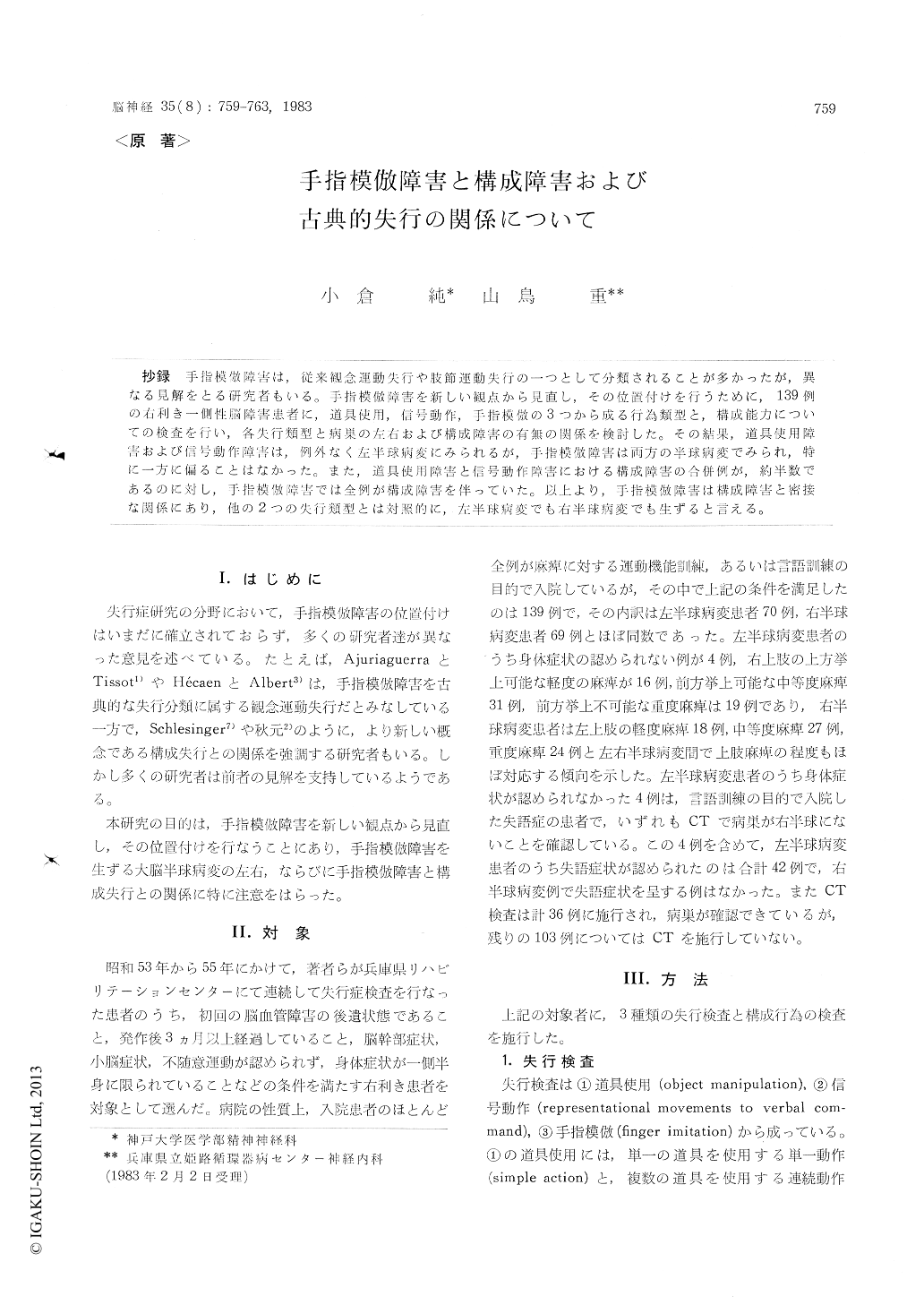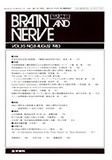Japanese
English
- 有料閲覧
- Abstract 文献概要
- 1ページ目 Look Inside
抄録 手指模倣障害は,従来観念運動失行や肢節運動失行の一つとして分類されることが多かったが,異なる見解をとる研究者もいる。手指模倣障害を新しい観点から見直し,その位置付けを行うために,139例の右利き一側性脳町障害患者に,道具使用,信号動作,手指模倣の3つから成る行為類型と,構成能力についての検査を行い,各失行類型と病巣の左右および構成障害の有無の関係を検討した。その結果,道具使用障害および信号動作障害は,例外なく左半球病変にみられるが,手指模倣障害は両方の半球病変でみられ,特に一方に偏ることはなかった。また,道貝使用障害と信号動作障害における構成障害の合併例が,約半数であるのに対し,手指模倣障害では全例が構成障害を伴っていた。以上より,手指模倣障害は構成障害と密接な関係にあり,他の2つの失行類型とは対照的に,左半球病変でも右半球病変でも生ずると言える。
In the field of apraxia study, difficulty of finger pattern imitation was generally considered as parts of classical apraxias, i. e. ideomotor apraxia or limbkinetic apraxia. But there were some authors who considered it more related to constructional ability. To bring some clarity to this ambiguity, we studied 139 right-handed unilateral brain-damaged subjects : 70 with left hemisphere lesion and 69 with right hemisphere lesion : on various tasks. Three types of manual movements, i. e. object manipulation, representational movement to verbal command and finger imitation, and constructional task were tested. As for manual praxis, response patterns elicited were recorded according to Kaplan's original method, which was slightly modified. Responses were categorized as apractic only when either no movement was elicited, or when the response was amorphous or parapraxic.
Of the 139 subjects tested, 35 subjects were classified as apractic in at least one category of the three types of manual praxis and 60 subjects were categorized as showing constructional disor-der. Object manipulation disturbance was observed in 9 subjects. Finger imitation difficulty was seen in 16. Disturbance of representational movement to verbal command was confirmed in at least 17subjects and was not determined in 7 more subjects who had comprehension difficulty to spoken language.
With regard to relationship between apractic disorders and laterality of hemisphere lesions, object manipulation difficulty and deficient repre-sentational movement to verbal command was seen only in the left hemisphere lesions. On the contrary, finger imitation difficulty was found in either hemisphere lesion and has no tendency toward lateralization. As for their relation with constructional disorder, the sharp contrast is again apparent. Among subjects who had object handling disorders and representational movement disorders to verbal command, concurrence and non-concur-rence of constructional disorder was quite equal. On the contrary, all subjects with finger imitation difficulty demonstrated the presence of construc-tional difficulty. The concurrence is quite signifi-cant. Taken together, the finger imitation difficulty seems to be highly correlated with constructional deficit and occurs with lesions in both hemispheres in contrast to the other two types of motor func-tions tested.

Copyright © 1983, Igaku-Shoin Ltd. All rights reserved.


